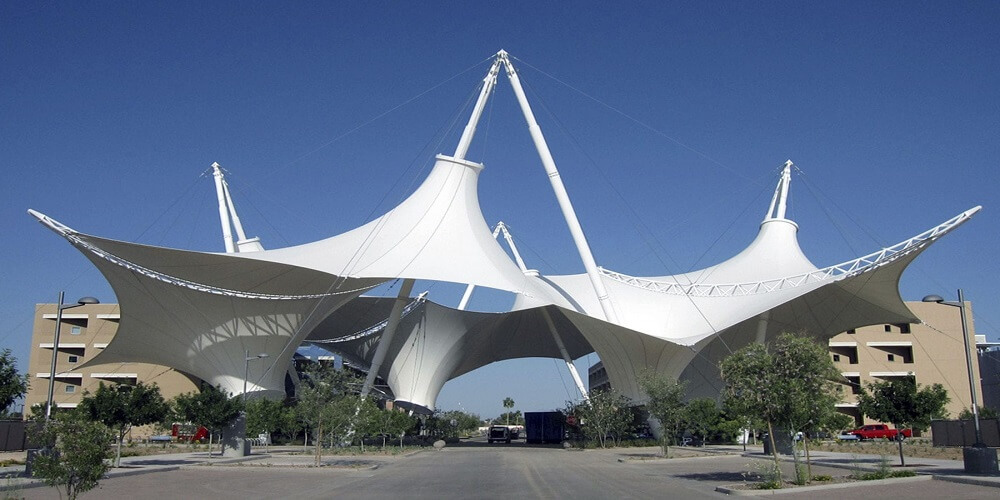Tensile structures are structural arrangements of elements in a way that the elements only carry tension. This type of structure does not carry compression or bending. It involves the application of tension principles to building elements. With regular constructions, the gravitational force is used to sustain the mass holding them in compression.
The tensile structure uses tension to sustain constructions instead of compression. In tensile structures, the load-bearing is achieved through tension in most of the structural components. Tension could be said to be the opposite of compression. This is the quality that makes it suitable for tents.
Types of tensile structure
Tensile structures are classified based upon the type of tensile forces acting in the construction. Tensile structures are classified into three classes. They include:
1. Linear tensile structures
In these types of tensile structures, the force acts upon the structures linearly. These structures are sustained by both compression elements and tensile force, but most of the load is carried by the linear tensile force acting within these structures.
An example of a linear tensile structure is the cable bridge. The pillars of the bridge act as the compression element, while the bulk of the load is carried by the cables which act as the tensile structure. Other examples of linear tensile structures include,
Straight tension cable
Draped cables
Cable-stayed beam
Cable trusses
2. Surface-stressed tensile structures
The surface-stressed tensile structures are those structures whose surface elements can bear the tension. Common examples of the surface-stressed tensile structures are the fabric tensile structures. Here, the tension is experienced by specially designed fabrics that are supported by vertical pillars.
Other examples of surface-stressed tensile structures include,
Pneumatically stressed membranes
Pre-stressed membrane
Grindshell
3. Three-dimensional tensile structures
In the three-dimensional tensile structures, all the elements involved are under tension. In these structures, compression is transferred to the ground through a central mast. Examples of the three-dimensional tensile structures can be seen at a sports arena where these structures are used as roofs.
Other examples of the three-dimensional tensile structures include,
Tensegrity structures
3D cable trusses
Uses of tensile structures
Due to how cheap and durable tensile structures are, they have a wide variety of uses. Here are some of the uses of tensile structures,
- Building façade
- A light roof over a stadium
- Roof for an indoor sports arena
- Shade for parking areas
- Shade for swimming pools
- Cantilever structures
- Interior design
- Temporary structures
- Building envelopes
- Construction of suspension bridges
- Tentmaking
Advantages of tensile structures
Here are some of the advantages of tensile structures,
- Durability: Tensile structures are made up of materials that can withstand climate change and harsh weather conditions, so can last for a long time.
- Designs: Due to how flexible they are, tensile structures can be designed into any shape or size of our choice.
- Easy maintenance: Tensile structures are very easy to maintain and replace.
- Cost-effective: They’re relatively inexpensive to procure and install.
- High quality: despite being cost-effective, tensile structures are still of high quality.
Summary
Tensile structures are great for tent making. They make the tent more stable and durable. They’re cost-effective and easy to manage.
Tensile structures are structural features that are sustained by tension, not compression or bending.
There are three (3) types of tensile structures; they include Linear tensile structures, Surface-stressed tensile structures and, Three-dimensional tensile structures.
Tensile structures are cost-effective and have a wide variety of uses.


